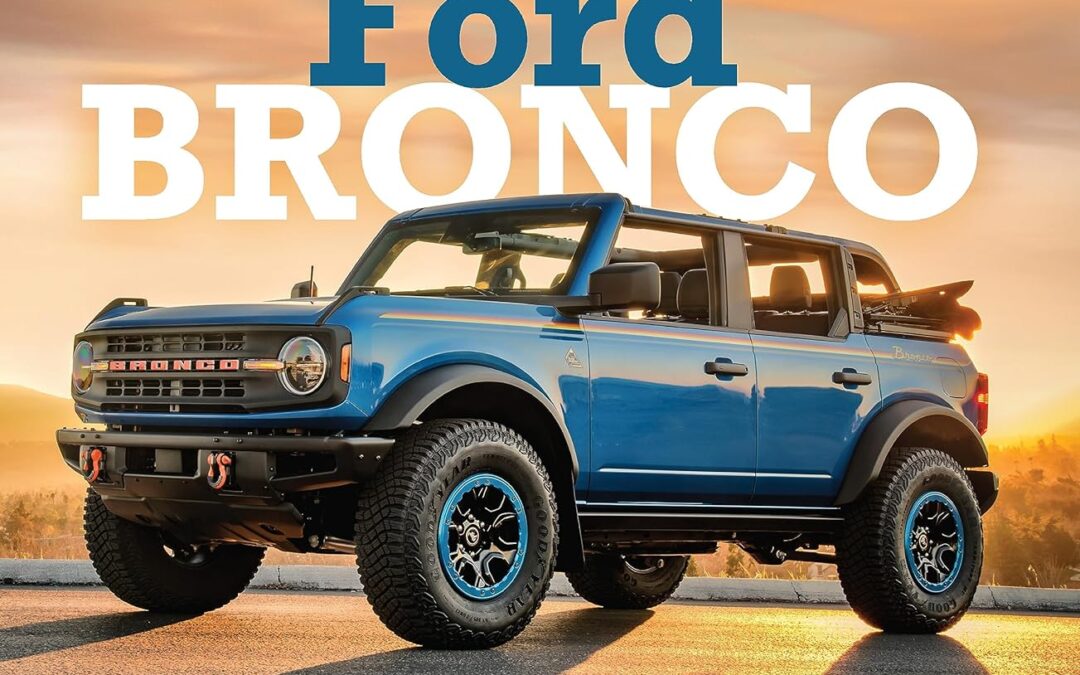
From the first drawings in the early 1960s to today’s uber-popular new Bronco, get the full story of Ford’s legendary SUV in this stunningly illustrated volume.
When Ford introduced the Bronco for the 1966 model year, its intent was to get a slice of the off-road and outdoor enthusiast utility market then owned by the popular Jeep CJ and International Harvester Scout. What Ford couldn’t know at the time was that it was creating a legend—a rugged, square-shouldered vehicle that would exist in its original form through 1977 and in various guises for a further 20 years, wrapping up its first life in 1996.
Since the Bronco’s retirement, the SUV/crossover sector has become the dominant segment of the automotive market. Nearly all manufacturers—even exotics like Lamborghini and Bentley—offer SUVs in their line-ups. In fact, Ford has largely discontinued passenger vehicles (except the Mustang) in favor of trucks and SUVs. Simultaneously, the collector market has turned its eye to vintage SUVs and trucks, the former growing significantly over the past 5 years. Classic Broncos have doubled in value over that period, regularly selling at prices ranging from $40K to $100K.
The story picks up in 2017 when Ford announced plans to revive one of its most hallowed nameplates: Bronco. Brilliantly styled to pick up the beloved, boxy cues of the original, customers began dropping deposits as soon as the order books opened. Ford still struggles to meet demand with speculators flipping new Broncos on the secondary market for thousands over invoice.
Beautifully produced and expertly written, Ford Bronco is a must-have book for all Bronco and SUV enthusiasts.
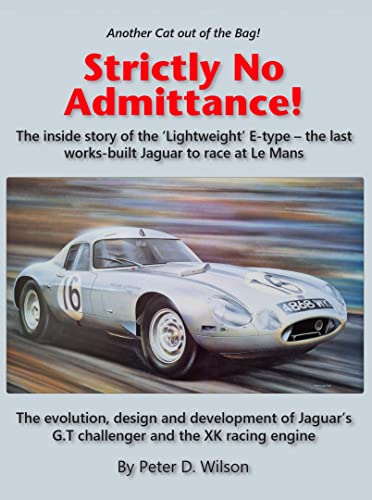
This impressive, large format book tells the inside story of the ‘Lightweight’ E-types. Built just in 1963, they are now amongst the rarest and most desirable of the race cars which came from Jaguar’s famous Competition Department – to which indeed there was ‘Strictly No Admittance’ for ordinary mortals! The book covers the evolution, design and development of Jaguar’s G.T. challenger and its XK racing engine. It is written by automotive engineer Peter Wilson who himself worked in the Competition Department throughout the period, where, together with his colleagues, helped build, and develop the production E-type through to its final form – the highly competitive and successful ‘Lightweight’ E-type. Peter’s remarkable recall of those events 60 or more years ago is reinforced by the hundreds of hours he spent in the Jaguar Daimler Heritage Trust’s impressive archives, and by many conversations with his former colleagues at Jaguar. The result is a book of astonishing detail (every single engine ever used by the factory in Lightweight E-types is, for example, identified and fully documented), while Peter’s account of how the car evolved from previous models, and the technicalities of how the engine, transmissions, brakes and bodywork were built and developed, are recorded in unprecedented detail. “The Lightweight E-type was created under the aegis of Jaguar’s founder, Sir William Lyons, and his engineering director William Heynes CBE”, writes publisher Paul Skilleter. “But the cars needed to be built and maintained, and Peter takes us into that ‘holy of holies’ and introduces us to the men who created the Lightweight E-type ‘in the metal’. “However, in successfully persuading Peter Wilson to follow up his XJ13 book with one on the Lightweight E-type, I hadn’t realised what I had let myself in for… The sheer quantity of words, graphs, diagrams and pictures which Peter presented me with was breathtaking – as was also the huge depth of the research clearly

This book explains how modern Formula 1 cars work and demystifies the extraordinary technology they contain.
By meticulously dissecting an F1 car into its constituent components, the author describes the design, engineering and function of every element, enabling the reader to develop a full understanding of how it all comes together to form a competitive package. The text is expertly written to satisfy both the engineering-minded reader as well as any enthusiast of the sport who wants to delve deeper, and supplemented by a superb range of close-up photographs, technical illustrations and diagrams.
- Chassis: design and manufacture; survival cell, fuel tank, impact structures, stiffness.
- Aerodynamics: principles, front and rear wings, turning vanes, sidepods, floor, wheels and their effect, brake ducts, suspension components, diffuser, Drag Reduction System (DRS).
- Suspension, steering and brakes: suspension layout, geometry and adjustments; steering wheel, column and geometry; brake hydraulics, brake-by-wire system, discs, calipers, pads and cooling.
- Power unit: the hybrid era, Internal Combustion Engine (ICE), Energy Recovery System (ERS), fuel.
- Transmission: clutch, gearbox, differential, driveshafts.
- Electronics: starting system, Electronic Control Unit (ECU), sensors, radio and data communications, cockpit display, cameras.
- And more: wheels and tyres; hydraulic system; safety equipment; cockpit controls.
- Chapters about car design and set-up.
- Use of analysis and simulation techniques such as computational fluid dynamics (CFD), wind-tunnel testing and rig testing. All F1 fans will find this book a deeply rewarding companion to enhance their appreciation of the sport.
All F1 fans will find this book a deeply rewarding companion to enhance their appreciation of the sport.
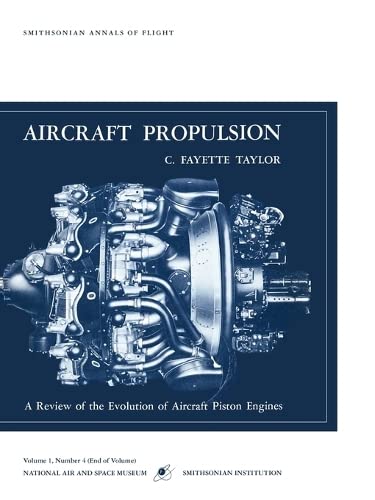
This, the fourth number of Smithsonian Annals of Flight, was the Fourth Lester B. Gardner Lecture, delivered at the Massachusetts Institute of Technology, March 8, 1962, and at the Smithsonian Institution, October 5, 1962. Subsequently it was published in the General Appendix to the Annual Report … of the Smithsonian Institution … for the Year Ended June 30, 1962 (1963). As presented here, the text has been revised, enlarged, and updated. Its 72 illustrations, many of them new, include a number of engines, aircraft, and the materials in the collections of the National Air and Space Museum. With it, for the first time, appears the bibliography which accompanied the original manuscript and which, for lack of space, could not then (1963) be printed. This has since been edited and expanded to approximately double its original length by Dr. Richard K. Smith while he was serving on the Museum staff. Its nearly 600 entries, most of them contemporary accounts, cover the whole range of engine development and related activities from the early beginnings. This bibliography should be a useful and welcome tool, both for the airplane enthusiast and for the historian of aviation technology.
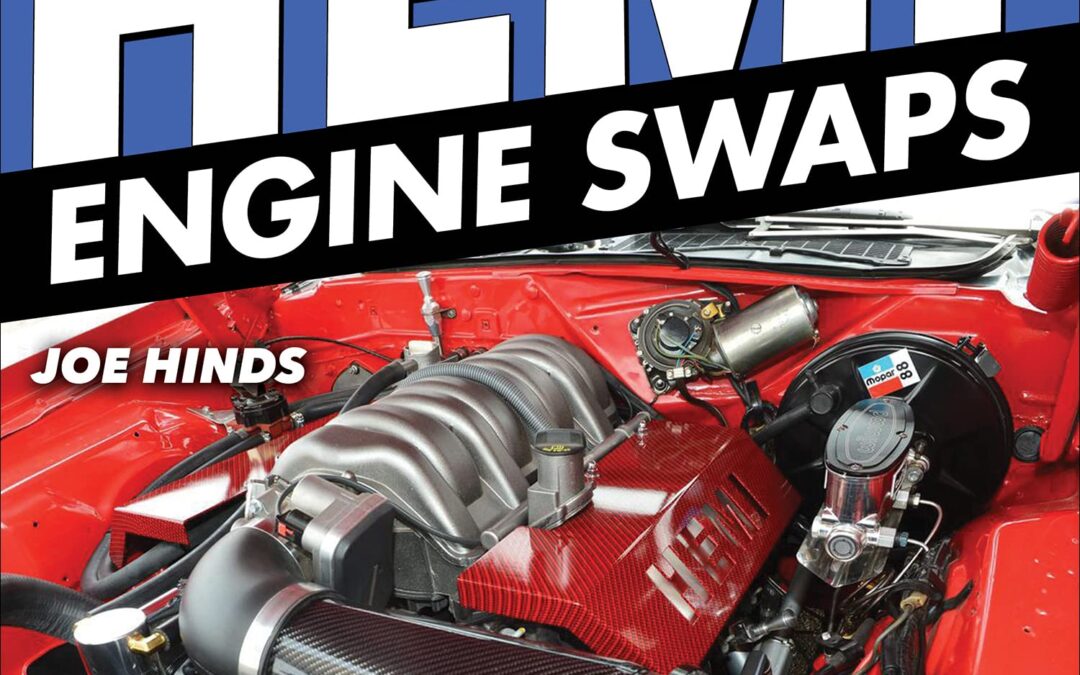
Have you made plans for a new Hemi swap into your classic car? Maybe you’re just curious about the process and want to know how much work is involved. Either way, New Hemi Engine Swaps: How to Swap 5.7L, 6.1L, 6.4L, and Hellcat Engines into Almost Anything has you covered!
Even casual enthusiasts are aware of how many people are swapping modern technology into vintage chassis. Successful LS swaps have been common for more than a decade. They seem to be everywhere among GM enthusiasts.
On the Mopar side, the new Hemi platform is now 20 years old, so plenty of salvage-yard cores are available. With the introduction of the new Hellcat in 2015 (as well as a more robust crate-engine program in recent years directly from Mopar), aftermarket manufacturers have recently seen the wisdom of making peripherals and parts to simplify the process of this swap. Suddenly, swapping a crate Hemi seems as achievable as an LS swap.
In New Hemi Engine Swaps: How to Swap 5.7L, 6.1L, 6.4L, and Hellcat Engines into Almost Anything, expert Joseph Hinds guides you through the process of turning your vintage ride into a modern street machine. The essentials are covered, including engine mounts, transmission cross members, headers that actually fit, and solutions for other common issues. Also covered are fuel-supply items (pumps and tanks) and engine-compatibility concerns (oil filter locations and oil-pan accommodations). Finally, the biggest concerns for most are the wiring, modern power train control modules (PCMs), computer controls, and fuel injection, all of which are covered here as well. There are even step-by-step instructions to fit a modern Hemi into an early-1970s-era Duster as well as a feature about programming aftermarket electronic fuel-injection (EFI) systems.
Now that the degree of difficulty in performing these swaps no longer requires a degree in computer science with welding certifications on the side, many are looking at their vintage Mopars in a new light. Whether you want to do this yourself, farm it out to a professional, or if you are just curious about how it is done, this is the guide for you.
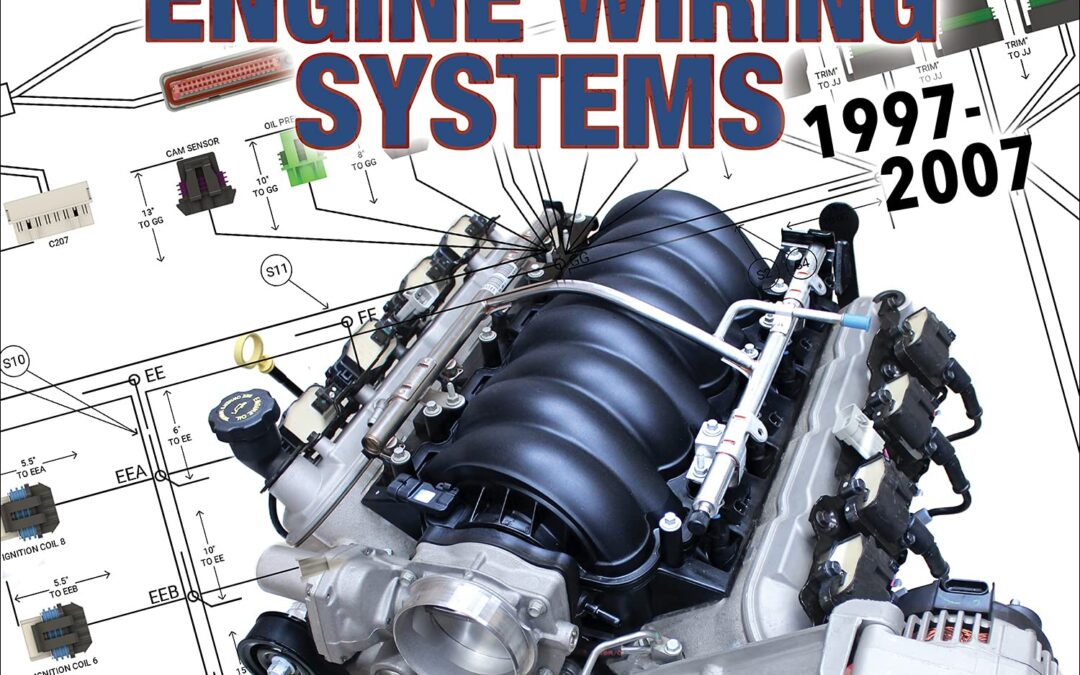
Automotive enthusiasts who have followed hot-rodding trends over the last decade know that GM’s LS-series engine is the most popular swap on the market. Similar to the first-generation small-block Chevy engines that were swapped into Model A Fords back in the day, these swaps are arguably just as popular. While kits and the aftermarket help with the logistics and the placement of hardware (such as motor mounts, oil pans, and headers), the area that still remains a mystery to most is how to wire and electronically control your swapped LS project.
In GM LS-Series Engine Wiring Systems, expert Mike Noonan helps demystify the entire complicated process. Extensively covered are terms and tools of the trade, advice on quality connections, detailed coverage of all the engine control modules offered, drive-by-wire systems, harness connectors, and cruise-control systems. Also covered in depth are air-conditioning systems, cooling-system fan operation, transmission interfaces and connectivity, supercharged-engine connections and control-module programming (tuning) for standalone operation.
Featuring wiring diagrams and computer-aided design (CAD) and computer-aided manufacturing (CAM) artwork as well as an appendix with real-world projects and examples, this guide covers all the bases. Whether you are performing a simple swap that utilizes only the basics, a more complex project with all the bells and whistles, or simply want a working knowledge of how these systems work, this guide will be a valuable resource for years to come.
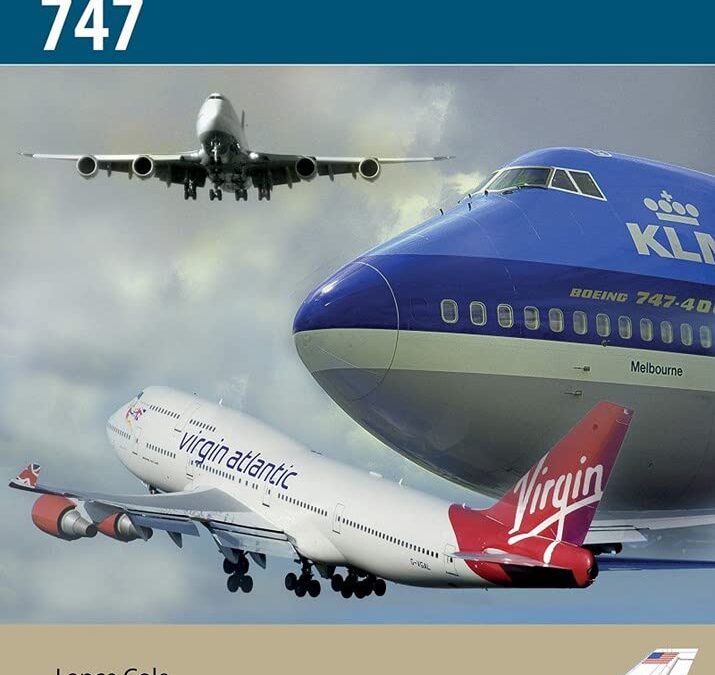
Boeing’s 747 ‘heavy’ has achieved a fifty-year reign of the airways, but now airlines are retiring their fleets as a different type of long-haul airliner emerges. Yet the ultimate development of the 747, the -800 model, will ply the airways for many years to come.
Even as twin-engine airliners increasingly dominate long-haul operations and the story of the four-engine Airbus A380 slows, the world is still a different place thanks to the great gamble that Boeing took with its 747. From early, difficult days designing and proving the world’s biggest-ever airliner, the 747 has grown into a 400-ton leviathan capable of encircling the world. Boeing took a massive billion-dollar gamble and won.
Taking its maiden flight in February 1969, designing and building the 747 was a huge challenge and involved new fields of aerospace technology. Multiple fail-safe systems were designed, and problems developing the engines put the whole programme at risk. Yet the issues were solved and the 747 flew like a dream said pilots – belying its size and sheer scale.
With its distinctive hump and an extended upper-deck allied to airframe, avionics and engine developments, 747 became both a blue-riband airliner and, a mass-economy class travel device. Fitted with ultra-efficient Rolls-Royce engines, 747s became long-haul champions all over the world, notably on Pacific routes. across the Atlantic in January 1970, 747 became the must-have, four-engine, long haul airframe. Japan Airlines, for example, operated over sixty 747s in the world’s biggest 747 fleet.
By the renowned aviation author Lance Cole, this book provides a detailed yet engaging commentary on the design engineering and operating life and times of civil aviation’s greatest sub-sonic achievement.
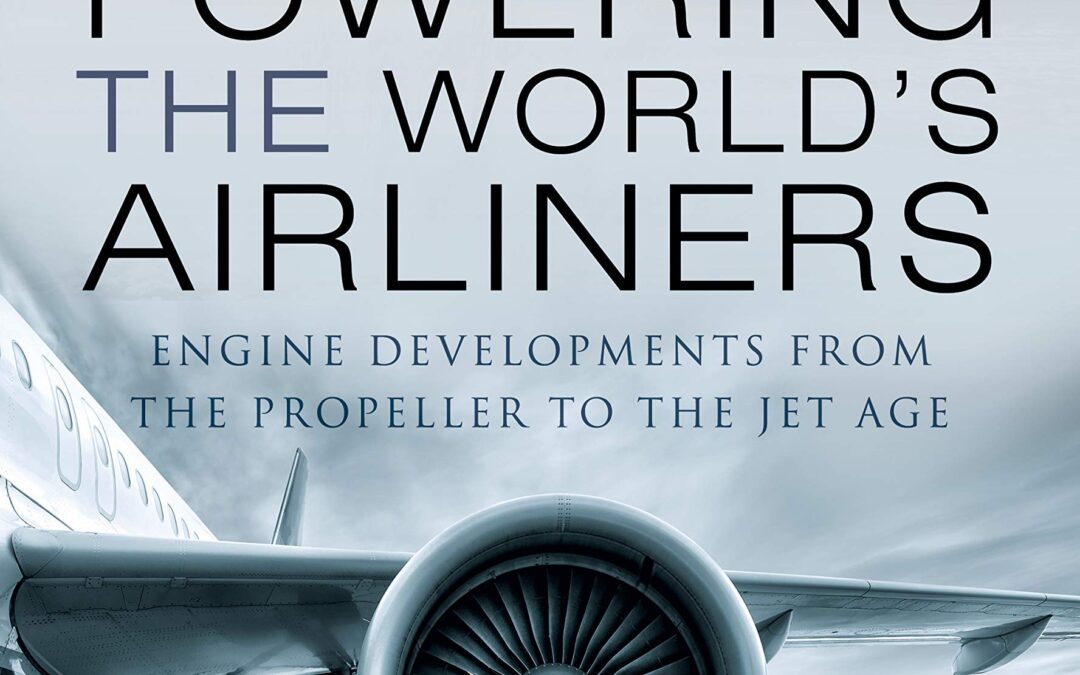
The first efforts of man to fly were limited by his ability to generate sufficient power to lift a heavier-than-air machine off the ground. Propulsion and thrust have therefore been the most fundamental elements in the development of aircraft engines.
From the simple propellers of the first airliners of the 1920s and 1930s, to the turboprops and turbojets of the modern era, the engines used in airliners have undergone dramatic development over a century of remarkable change. These advances are examined in detail by aeronautical engineer and author Reiner Decher, who provides a layman’s guide to the engines that have, and continue to, power the aircraft which carry millions of travelers across millions of miles each year.
Reiner Decher also looks at the development of aero engines during the Second World War and how that conflict drove innovation. He also explains the nature of wing design and how they provide lift and of the considerations of airflow over their surfaces, from the early days of the twentieth century to the present.
To enable an easy understanding of this intriguing subject, Powering the World’s Airliners is profusely illustrated, transporting readers back to the time of each major development and introducing them to the key individuals of the aero industry in each era.
After reading this comprehensive yet engaging story of the machines that power the aircraft in which we fly, no journey will ever seem quite the same again.

As World War II drew to a close, America’s premier fire apparatus builder–the American-LaFrance Foamite Corp. of Elmira, N.Y.–bet the company’s future on its radical new cab-ahead-of-engine 700 Series fire engines. In a spectacular gamble to capture the superheated postwar market, all of the company’s existing products were discontinued and its customers were essentially told to “take it or leave it.” This bold gamble paid off and 700 Series rigs soon filled firehouses across the nation, sweeping aside all competitors and ultimately defining the breakthrough 700 as “America’s Fire Engine.” This is the first comprehensive history of the game-changing 700. Individual chapters detail not only each of the eight major vehicle types but also the origins, design controversies, manufacturing, and marketing of the 700 and short-lived transitional 800 Series. The book includes a meticulously researched registry of every 700/800 series apparatus delivered, supported by many interpretive tables detailing production, specifications and major fire department fleets.

Prohibition was imposed by eager temperance movements organizers who sought to shape public behavior through alcoholic beverage control in the 19th and early 20th centuries. The success of reformers’ efforts resulted in National Prohibition in America from 1920 to 1933, but it also resulted in a thriving illegal business in the manufacture and distribution of illegal liquor. The history of Prohibition and the resulting illegal drinking is frequently told through the lens of crime and violence in Chicago and other major East Coast cities. Often neglected are the effects of Prohibition on the Western part of the United States and how Westerners rose to the challenge of avoiding the consequences of illegal drinking. Illegal liquor was imported from abroad, made in stills using strange ingredients that were sometimes poisonous to the unlucky drinker. This history includes stories ranging from serious to quirky, and provides an entertaining account of how misguided efforts resulted in numerous unintended consequences.
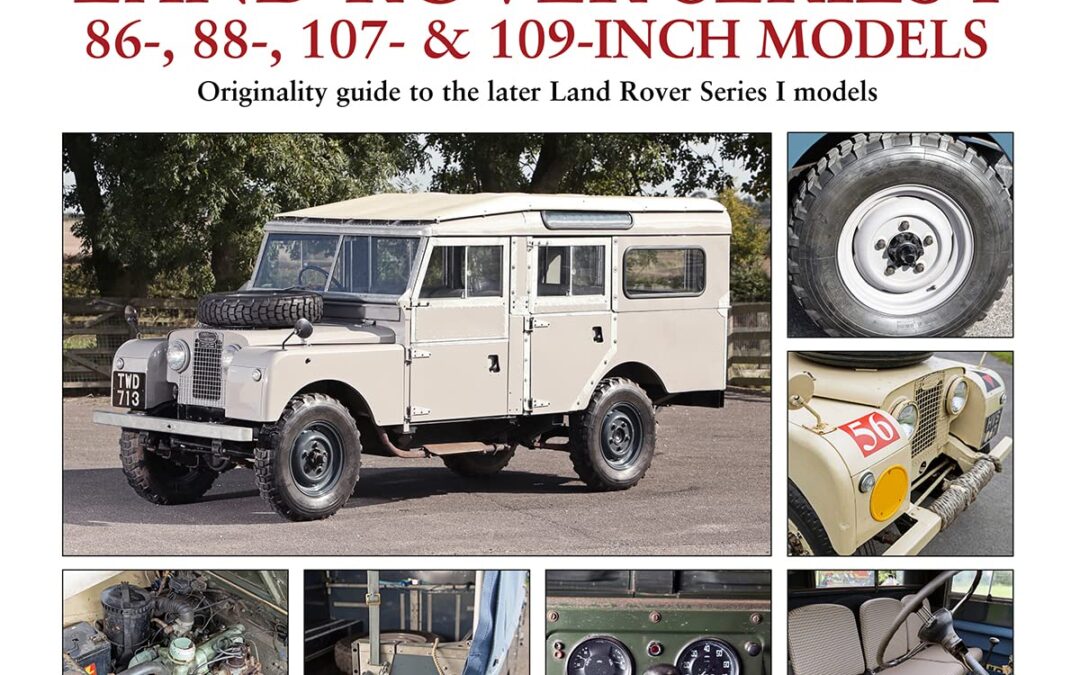
It was back in 1996 that James Taylor’s book Original Land Rover Series I was first published, and it has been in print and in constant demand ever since. In recent years James has been engaged in further research and the gathering of new information for a much larger and more detailed work about the Series I, so, having covered the 80-inch model last year in Factory-Original Land Rover Series I, 80-inch Models, this substantial second book is dedicated to the longer wheelbase 86-109-inch models. The aim remains the same as it was for the 1996 book: to provide a detailed guide to correct factory specification and equipment for all models.
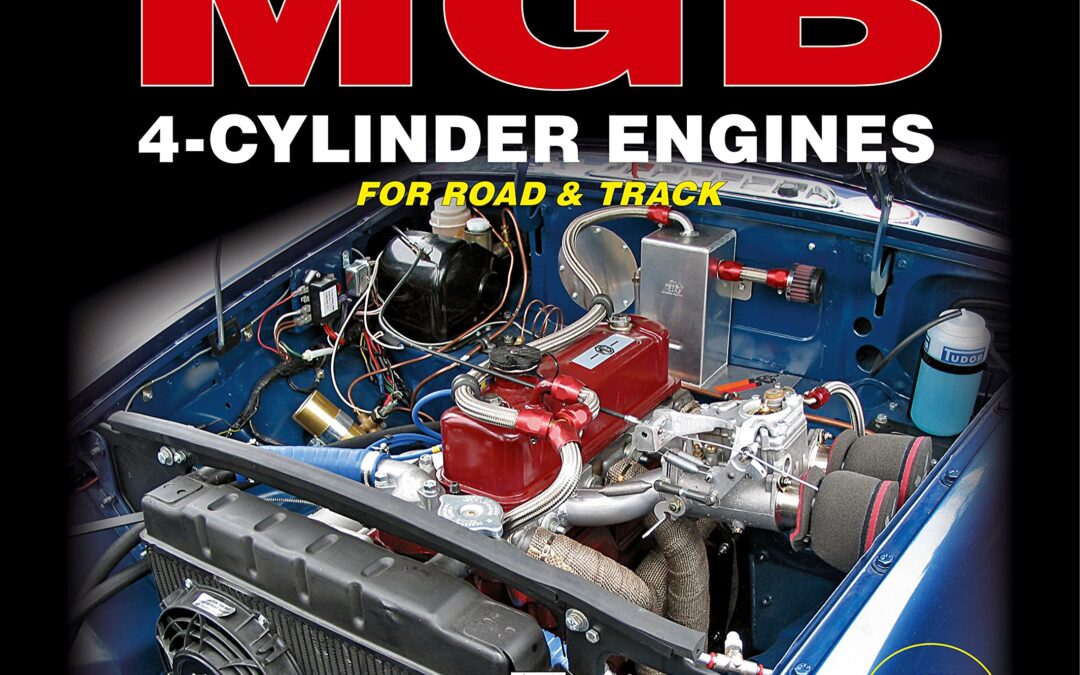
How to get maximum performance from the MGB’s four-cylinder B-series engine for road or track.This book tells you all you could want to know, expert tips, and is packed with understandable and down-to-earth advice based on the author’s years of hands-on experience. ·Covers all MGB and MGB GT 4-cylinder engines (except 3-bearing crank engines) ·Explains the ‘first principles’ of engine power and tuning ·Handy ‘power recipes’ to help achieve the performance you want ·How to improve airflow, camshafts, carburation, ignition and exhaust ·Lubrication and cooling systems improvements ·Uprating suspension, wheels, tyres and steering for better handling ·How to set-up and tune on a rolling road ·Comprehensive appendix with formulae and tuning data ·Includes cam timing tables for Piper and Kent cams ·List of specialists and suppliers to help with your MGB tune. Written by an acknowledged expert, who runs a well-known tuning business in Derbyshire, England. Peter Burgess has been working with MGBs since 1978 and his engine building expertise has produced many MGB race wins. He is also the author of How To Build, Modify & Power Tune Cylinder Heads.
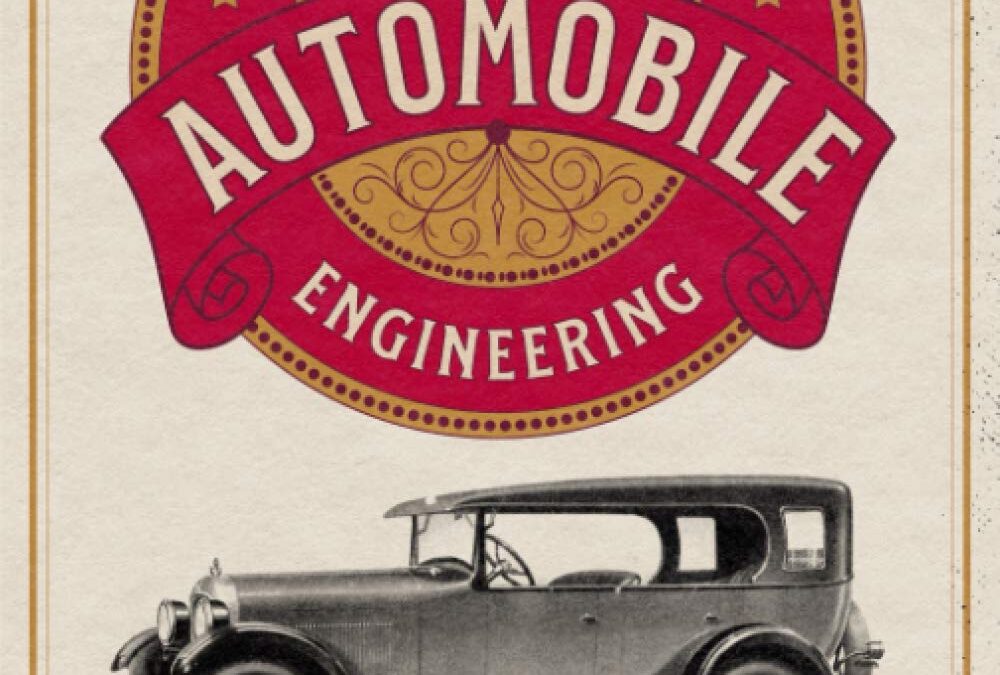
Volume 5 concludes the in-depth five-part series with detailed antique car wiring diagrams, data sheets, and a thorough look at classic electrical systems.
The Classic Cars and Automobile Engineering series spans five volumes with more than 1500 images and diagrams for enthusiasts, collectors, and mechanics. Volume 5 includes:
– Digitally restored images and diagrams
– Big 7” x 10” pages
– Easy to read writing style
– Author’s original page layouts
– Classic type font and hand-drawn lettering
– Bold retro-style cover
Everything that you ever wanted to know about the inner workings of antique cars, trucks, bikes, engines, tractors and more are included in this expansive tome of knowledge. Originally printed in 1926, this vast wealth of knowledge for classic car lovers was digitally restored and enhanced by writer-historian Mark Bussler and the CGR Publishing Restoration Workshop for a new generation of automobile enthusiasts.
This detailed, illustrated book collection is a must-have reference guide for all owners of period automobiles, motorcycles, airplanes, and anything powered by early 20th-century engines. Enlarged and printed on large 7” by 10” pages, The Classic Cars and Automobile Engineering series is designed for easy reading in the shop or library. Volume 5 focuses on electrical systems, wiring diagrams and data sheets.
Included subjects: How to read wiring diagrams – symbols – charts – generators – lamp voltages – dimming devices – electric horns – ignition timing – spark plugs – distributors – currents – methods of regulation – proper conduction – hydrometer tests – low battery – electric gear shifts – and more.
Includes wiring diagrams and datasheets for Apperson, Buick, Cadillac, Case, Chalmers, Chandler, Chevrolet, Chrysler, Cleveland, Cole, Cunningham, Davis, Dodge, Dort, Duesenberg, Durant, Essex, Ford, Flint, Franklin, Gardner, Gray, Haynes, Hudson, Hupmobile, Jackson, Jewett, Jordan, Kissel, LaFayette, Lexington, Lincoln, Marmon, Maxwell, Mercer, Moon, Nash, National, Oakland, Oldsmobile, Overland, Package, Paige, Peerless, Pierce-Arrow, Rco, Rickenbacker, Rollin, Rolls-Royce, R&V Knight, Star, Stephens, Studebaker, Stutz, Wills Sainte Claire, Willys-Knight, and Winton.
Table of contents:
– Chapter 1: Reading Wiring Diagrams and Auxiliary Electrical Equipment
– Chapter 2: Wiring Diagrams and Data Sheets
– Chapter 3: Summary of Electrical Principles
– Chapter 4: Ignition Instructions
– Chapter 5: Generators
– Chapter 6: Wiring Systems
– Chapter 7: Battery
– Chapter 8: Glossary of Automobile Terms
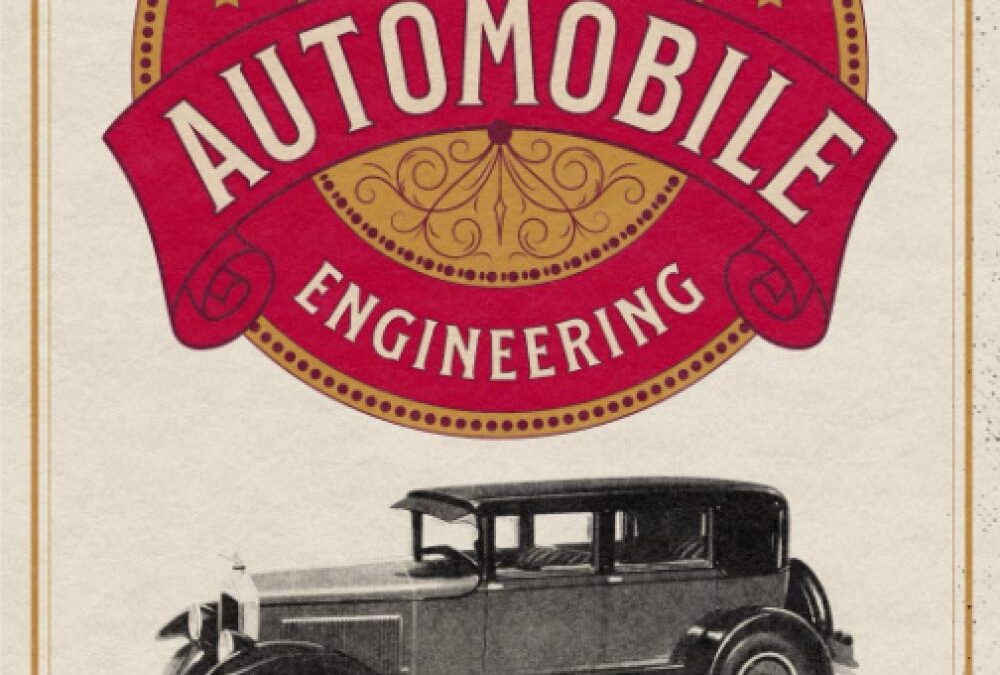
Volume 4 in this illustrated five-part series highlights ignitions, starters, generators, batteries, and electrical repairs.
The Classic Cars and Automobile Engineering series spans five volumes with more than 1500 images and diagrams for enthusiasts, collectors, and mechanics. Volume 4 includes:
– Digitally restored images and diagrams
– Big 7” x 10” pages
– Easy to read writing style
– Author’s original page layouts
– Classic type font and hand-drawn lettering
– Bold retro-style cover
Everything that you ever wanted to know about the inner workings of antique cars, trucks, bikes, engines, tractors, and more are included in this expansive tome of knowledge. Originally printed in 1926, this vast wealth of knowledge for classic car lovers was digitally restored and enhanced by writer-historian Mark Bussler and the CGR Publishing Restoration Workshop for a new generation of automobile enthusiasts.
This detailed, illustrated book collection is a must-have reference guide for all owners of period automobiles, motorcycles, airplanes, and anything powered by early 20th-century engines. Enlarged and printed on large 7” by 10” pages, The Classic Cars and Automobile Engineering series is designed for easy reading in the shop or library. Volume 4 focuses on electrical equipment and features elementary classic car electric system workings, ignition fundamentals, batteries, electrical repair, starting motors, and more.
Specific detailed subjects include magnetism, poles, laws, magnetic substances, dynamos, armature windings, field magnets, induction, self-induction, source of current, magnetos, spark plugs, induction coils, spark timing, magneto speeds, types of wiring systems, battery charging, cleaning a battery, replacing a jar, Edison Cell care, testing equipment, lamp troubles, and much more.
Table of contents:
– Chapter 1: Electrical Principles
– Chapter 2: Ignition Fundamentals
– Chapter 3: Ignition Systems
– Chapter 4: Ignition Operations
– Chapter 5: Motors
– Chapter 6: Generators
– Chapter 7: Storage Batteries
– Chapter 8: Electrical Repairs
– Chapter 9: Ford Car Electrical System
– Chapter 10: Ohm’s Law
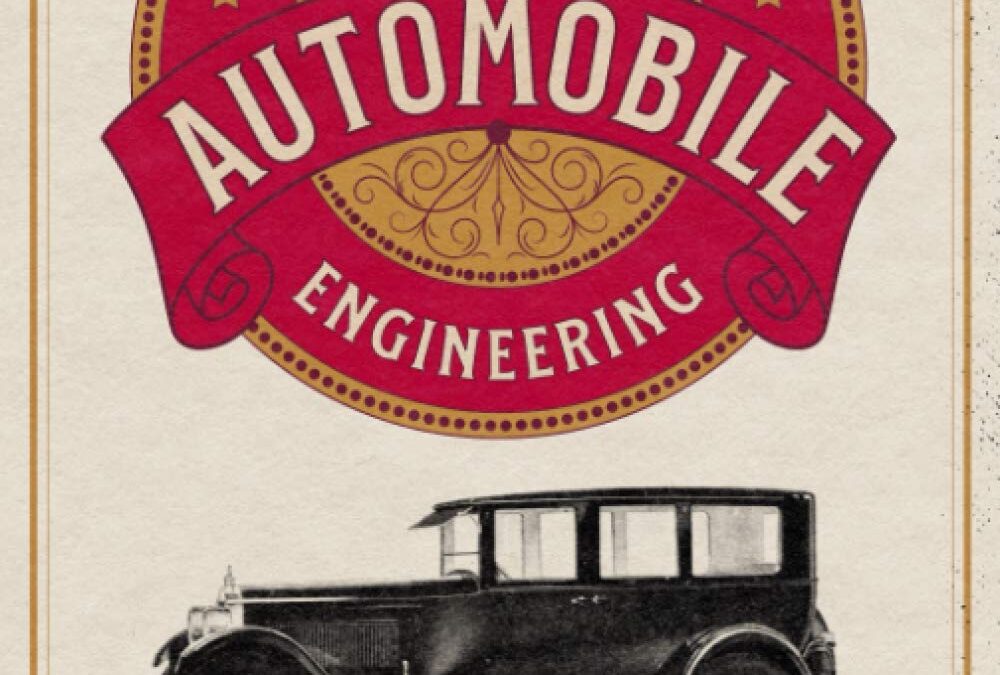
Volume 3 in this illustrated five-part series highlights antique motorcycles, tractors, airplane engines, period welding techniques, and Q&A.
The Classic Cars and Automobile Engineering series spans five volumes with more than 1500 images and diagrams for enthusiasts, collectors, and mechanics. Volume 3 includes:
– Digitally restored images and diagrams
– Big 7” x 10” pages
– Easy to read writing style
– Author’s original page layouts
– Classic type font and hand-drawn lettering
– Bold retro-style cover
Everything that you ever wanted to know about the inner workings of antique cars, motorcycles, engines, tractors and more are included in this expansive tome of knowledge. Originally printed in 1926, this vast wealth of knowledge for classic car and bike lovers was digitally restored and enhanced by writer-historian Mark Bussler and the CGR Publishing Restoration Workshop for a new generation of automobile and classic motorcycle enthusiasts.
This detailed, illustrated book collection is a must-have reference guide for all owners of period automobiles, motorcycles, airplanes, and anything powered by early 20th-century engines. Enlarged and printed on large 7” by 10” pages, The Classic Cars and Automobile Engineering series is designed for easy reading in the shop or library. Subjects covered in Volume 3 include antique motorcycles with illustrations of classic Harley-Davidson models such as the Twin-Cylinder Three-Speed Motorcycle, Thor lightweight bikes, The Merkel Motorcycle, Dayton Motor Bicycle, a detailed Excelsior Motorcycle diagram, and more.
Aviation engines are covered in detail from manufacturers such as King-Bugatti, Curtiss, Liberty, Packard, and Sunbeam. Tractors, air-cleaners, oils, ignitions, workbenches, blowtorches, micrometers, tool grinding, drill presses, gases, arc welding, types of welds, after-treatment, and much more are covered with numerous detailed illustrations.
Table of contents:
– Chapter 1: Motorcycles
– Chapter 2: Aviation Engines
– Chapter 3: Gasoline Tractors
– Chapter 4: Shop Information
– Chapter 5: Oxy-Acetylene Welding Practice
– Chapter 6: Questions and Answers
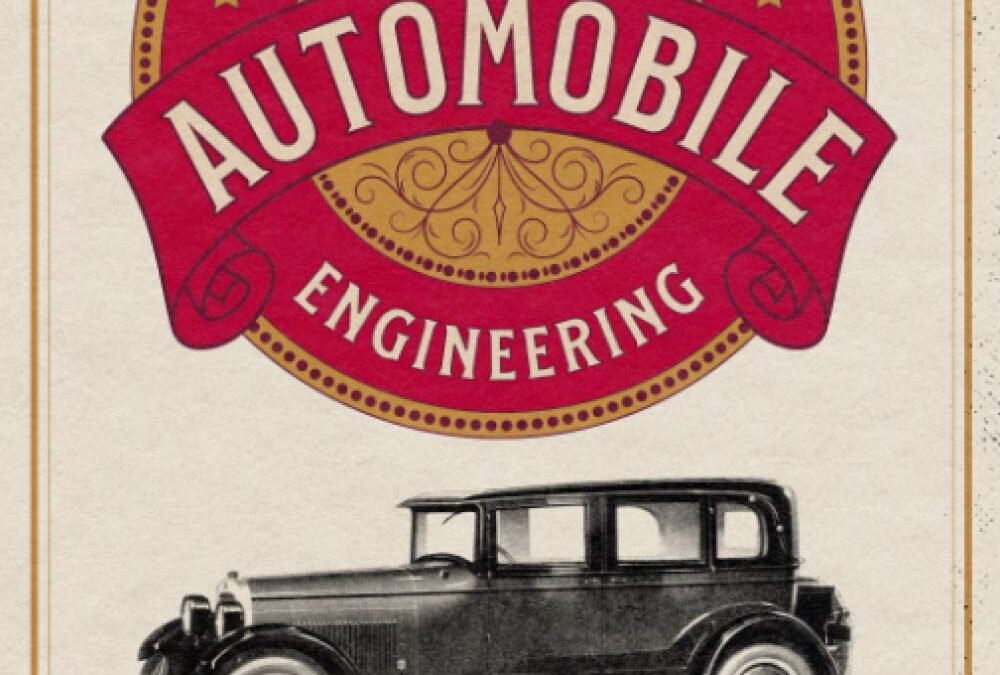
Part 2 of the definitive five-part book series about classic automobile engineering covers transmissions, brakes, wheels, tires, and more.
The Classic Cars and Automobile Engineering series spans five volumes with more than 1500 images and diagrams for enthusiasts, collectors, and mechanics. Includes:
– Digitally restored images and diagrams
– Big 7” x 10” pages
– Easy to read writing style
– Author’s original page layouts
– Classic type font and hand-drawn lettering
– Bold retro-style cover
Everything that you ever wanted to know about the inner workings of antique cars, trucks, bikes, engines, tractors, and more is included in this expansive tome of knowledge. Originally printed in 1926, this vast wealth of knowledge for classic car lovers was digitally restored and enhanced by writer-historian Mark Bussler and the CGR Publishing Restoration Workshop for a new generation of automobile enthusiasts.
This detailed, illustrated book collection is a must-have reference guide for all owners of period automobiles, motorcycles, and anything powered by early 20th-century engines. Enlarged and printed on large 7” by 10” pages, The Classic Cars and Automobile Engineering series is designed for easy reading in the shop or library. Subjects covered in Volume 2 include transmissions, axles, brakes, wheels, tires, and classic Fords.
Table of contents:
– Chapter 1: Transmissions
– Chapter 2: Rear Axles and Final Drive
– Chapter 3: Brakes
– Chapter 4: Steering Apparatus
– Chapter 5: Frames and Special Type of Drive
– Chapter 6: Springs and Shock Absorbers
– Chapter 7: Front Axles and Bearings
– Chapter 8: Wheels
– Chapter 9: Rims
– Chapter 10: Tires
– Chapter 11: Ford Construction and Repair
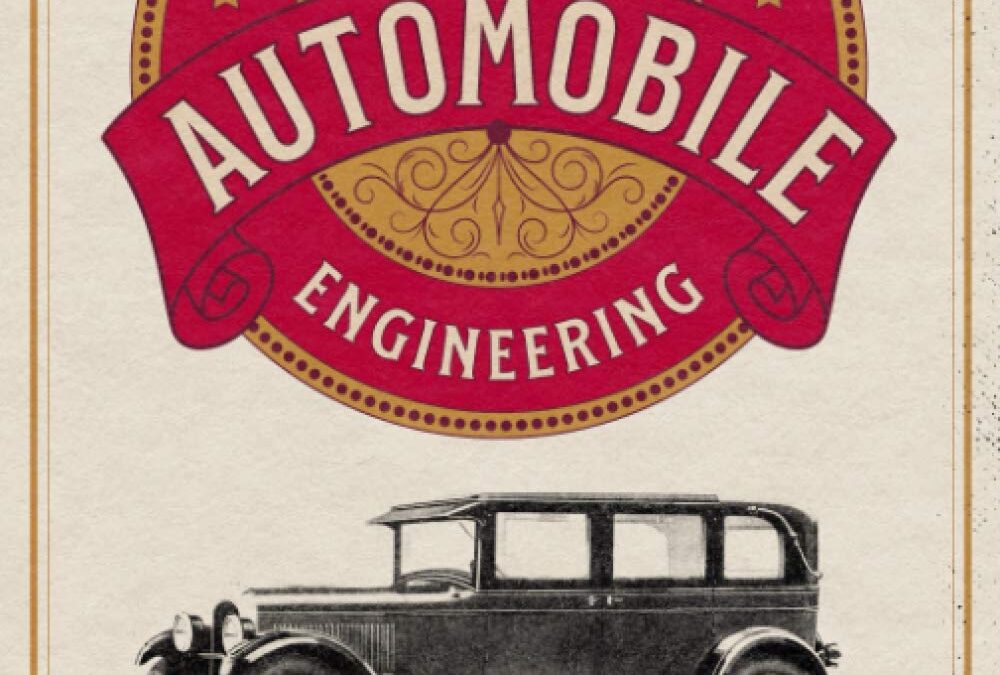
The definitive five-part book series about classic automobile engineering starts here with Volume 1.
The Classic Cars and Automobile Engineering series spans five volumes with more than 1500 images and diagrams for enthusiasts, collectors, and mechanics. Includes:
– Digitally restored images and diagrams
– Big 7” x 10” pages
– Easy to read writing style
– Author’s original page layouts
– Classic type font and hand-drawn lettering
– Bold retro-style cover
Everything that you ever wanted to know about the inner workings of antique cars, trucks, bikes, engines, tractors, and more is included in this expansive tome of knowledge. Originally printed in 1926 by the American Technical Society, this vast wealth of knowledge for classic car lovers was digitally restored and enhanced by writer-historian Mark Bussler and the CGR Publishing Restoration Workshop for a new generation of automobile enthusiasts.
This detailed, illustrated book collection is a must-have reference guide for all owners of period automobiles, motorcycles, and anything powered by early 20th-century engines. Enlarged and printed on large 7” by 10” pages, The Classic Cars and Automobile Engineering series is designed for easy reading in the shop or library. Subjects covered in Volume 1 include elementary engine principles – spark plug position – throttle valves – the inner workings of cylinders – crankshaft balance – water cooling systems – cone, disc, hydraulic, borg and beck clutches – four-cylinder, six-cylinder, eight-cylinder, and twelve-cylinder engines – much more.
Table of contents:
– Chapter 1: Outline of Automobile Construction
– Chapter 2: Explosion Engines
– Chapter 3: Cylinders
– Chapter 4: Pistons
– Chapter 5: Valves and Their Mechanism
– Chapter 6: Camshafts
– Chapter 7: Connecting Rods
– Chapter 8: Crankshafts
– Chapter 9: Crankcases
– Chapter 10: Carburetors
– Chapter 11: Cooling Systems
– Chapter 12: Manifold Design and Construction
– Chapter 13: Clutches

Realize your Ford Coyote engine’s full potential by using this detailed resource as a guide to select the right parts for the street or the strip.
Veteran Ford writer and historian, Jim Smart, explains and highlights all of the latest and greatest options to achieve more horsepower and torque, and of course, faster quarter-mile times in Ford Coyote Engines: How to Build Max Performance-Revised Edition.
In this Revised Edition, now covering Generation III engines as well as Generation I & II, upgrades included are engine building techniques, cold-air induction kits, supercharger and pulley kits, better exhaust headers, fuel system and ECU tuning upgrades, and more. Both Ford and the aftermarket have produced an array of parts to squeeze even more power out of your Coyote.
Ford introduced its first “clean slate design” V-8 engines in the early 1990s in Ford, Lincoln, and Mercury models. Known as the “Modular” engine family, the 4.6L engines employed new overhead cams, multi-valve performance, distributorless ignition, and more. This engine had new technology for its time, and it proved to be an extremely durable workhorse that logged hundreds of thousands of miles in police and taxi applications as well as light-duty trucks. And, of course, hotter versions, and even supercharged versions, found their way into performance applications such as Mustang GTs and Cobras.
By 2011, Ford wanted something hotter and more current, especially for its flagship Mustang GT and GT350 models, which were suddenly competing with new 6.2L LS3 engines in Camaros and 6.4L Hemi engines in Challengers. Enter Ford’s new 5.0L “Coyote” engine with Twin Independent Variable Cam Timing (Ti-VCT); it was an evolution of the earlier 4.6L and 5.4L Modular designs. Although the new Coyote engine had increased displacement, it still had far fewer cubes than the competition. Despite less displacement, the Coyote could hold its own against bigger Chevy and Chrysler mills thanks to advanced technology, such as 4V heads with better port and valvetrain geometry. The Coyote is also Ford’s first foray into technology that includes Ti-VCT and cam-torque-actuated (CTA) function, which is a fancy way of saying variable cam timing for an incredible power curve over a broader RPM range. Now, in Generation III, Ford has implement a system using both Port and Direct Fuel Injection, taking advantage of the benefits of both systems in a single application.
Even with all of this new technology, there is always room for improvement. If you are looking for even more power from your new Coyote, look no further than this volume.
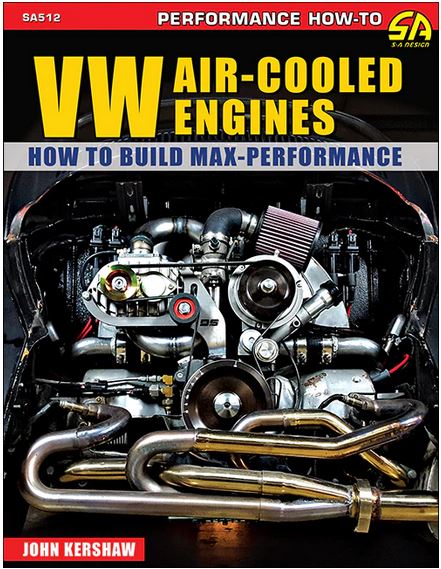
The VW Beetle (officially the Volkswagen Type 1) needs no introduction. Manufactured and marketed globally by Volkswagen from 1938 to 2003, more than 21 million were produced and sold around the world. Extremely popular in the US and Europe during the 1950s and 1960s, increasing competition from Japanese, American, and European manufacturers as well as stiffening demands for better safety and emissions contributed to a sharp decline in sales in the early 1970s. The Beetle was manufactured in much smaller numbers in Germany until the late 1970s, when production shifted to Brazil and Mexico, where operating cost was a was a large factor in keeping the Beetle alive. While simple and fun, the Beetle had simply become outdated.
Of course, the enthusiast market did not see it that way. Aficionados loved the simplicity in the design as well as its aesthetics and enjoyed tinkering with the mechanicals of their Beetles, Buses, Type 3 models and Karmann Ghias. There is no shortage of options when customizing your Beetle, and for many, extracting as much performance out of their air-cooled flat 4 was the way to go. Not only does it remedy the issue of keeping up with modern traffic but Beetles also respond really well to modifications and have a robust aftermarket to support them.
In VW Air-Cooled Engines: How to Build Max Performance, VW veteran Dr. John F. Kershaw lays the groundwork for getting the most possible power for your desired use and application. Covered here are all the various power levels and components to get you there. It’s all here: rotating assemblies, cylinder heads, cams and the valvetrain, engine blocks, ignitions systems, fuel injection, carburetors and induction, exhaust, sources for parts, and even turbos and superchargers.
Are you looking for just a little more power to keep up with traffic or maybe a streetable high-performance machine? Perhaps you are interested in a little street/strip action or even all-out racing applications. All of your options are examined in this book. Add it to your air-cooled library today.
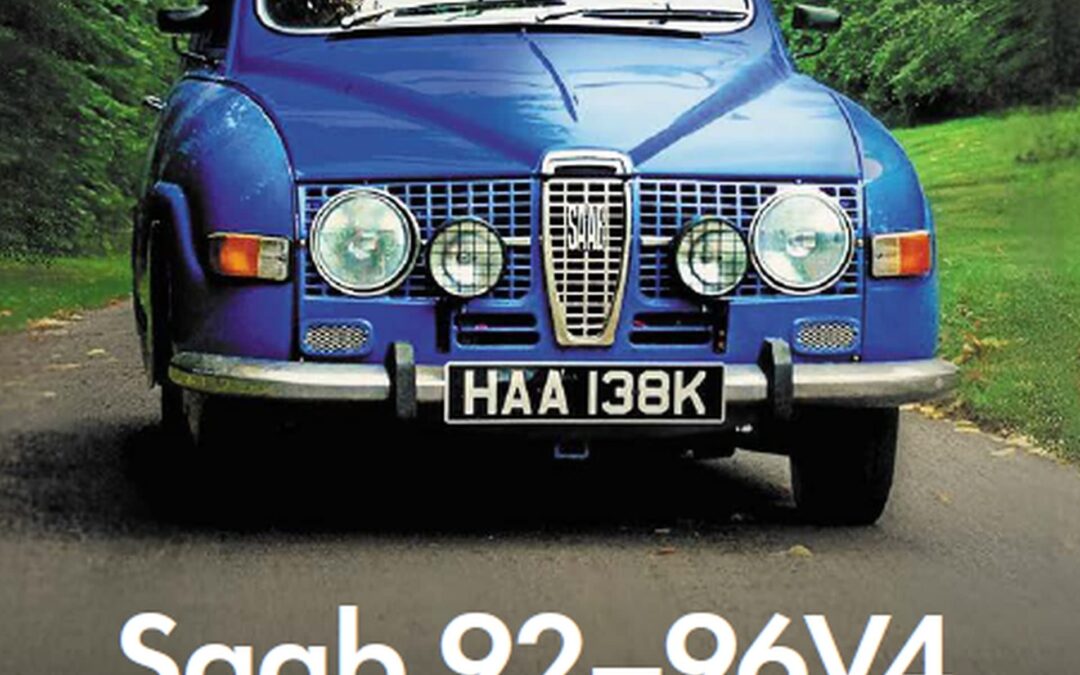
Launched in 1949 as the 92 before evolving into the 93, 96 2-stroke and 96V4, this car was in production for thirty-one years. Attracting global admiration and sales, it also excelled in motorsport and by the early 1960s was the most successful rally-car in Europe. A decline in sales in the 1960s was reversed with the launch of the 96V4 which resulted in its success continuing into the 1980s. With over 200 archive and colour photographs, this book provides a new description of the Saab company’s original car and includes detailed biographies of important Saab figures and extensive discussion of the engineering and design decisions that made the car such a success. There is coverage of the original Saab story in North and South America and a comprehensive review of Saab 92, 93, 96, motor sport history. Full technical details and specifications and tuning details are given and finally, there is a chapter on owners’ experiences and Saab veteran’s recollections.






















